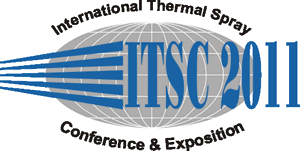
|
2679 |
|
Characterization of bioactive high velocity suspension flame sprayed (HVSFS) single splats |
|
Giovanni Bolelli / Department of Engineering "Enzo Ferrari", University of Modena and Reggio Emilia, Italy Devis Bellucci / University of Modena and Reggio Emilia, Department of Materials and Environmental Engineering, Italy Valeria Cannillo/ University of Modena and Reggio Emilia, Department of Materials and Environmental Engineering, Italy Rainer Gadow/ Universität Stuttgart, Institute for Manufacturing Technologies of Ceramic Components and Composites, Germany Andreas Killinger/ Universität Stuttgart, Institute for Manufacturing Technologies of Ceramic Components and Composites, Germany Luca Lusvarghi/ University of Modena and Reggio Emilia, Department of Materials and Environmental Engineering, Italy Antonella Sola/ University of Modena and Reggio Emilia, Department of Materials and Environmental Engineering, Italy Nico Stiegler*/ Universität Stuttgart, Institute for Manufacturing Technologies of Ceramic Components and Composites, Germany |
|
High velocity suspension flame spraying (HVSFS) is an innovative technique where a modified gas-fuelled HVOF torch is fed with a fine particle suspension. As it has shown good potential for the deposition of bioactive coatings on metallic prostheses, deeper research is required to acquire sound knowledge over the entire deposition process. In this study, single splats of two different bioactive materials, namely tricalcium phosphate (TCP) and bioactive glass (46.0mol% SiO2, 2.6mol% P2O5, 27.0mol% CaO, 24.4mol% K2O, designated as Bio-K ), were therefore collected onto smooth glass substrates. Both materials were reduced to micron-sized powder form by attrition milling in isopropanol and dispersed (20wt.%) in a 60wt.% water + 40wt.% isopropanol mixture. This suspension was fed into the HVSFS torch, generating a hot particle stream. Using a specially designed substrate holder, a selected portion of that stream could be screened out, so that isolated lamellae could be collected onto the glass. Five different process parameter sets were tested, varying the oxygen and fuel (propane) flow rate and the stand-off distance according to a 2-level fractional factorial design-of-experiment (DoE) plan. The splats were inspected by scanning electron microscopy (SEM) and their phase composition was assessed by micro-Raman spectroscopy. Their profiles were acquired by atomic force microscopy (AFM) and the size of the molten droplets which originated them could be computed by assuming that splats were generated by equivalent spherical droplets. Such size could be compared to the size of the agglomerates formed in the suspension, measured by laser diffraction technique, so that it was possible to infer what fraction of those agglomerates actually contributes to the build-up of a coating layer. Moreover, the splat flattening ratio could be computed and, using literature models, it could be relating it to the in-flight properties of the particles, their velocity could be estimated. |